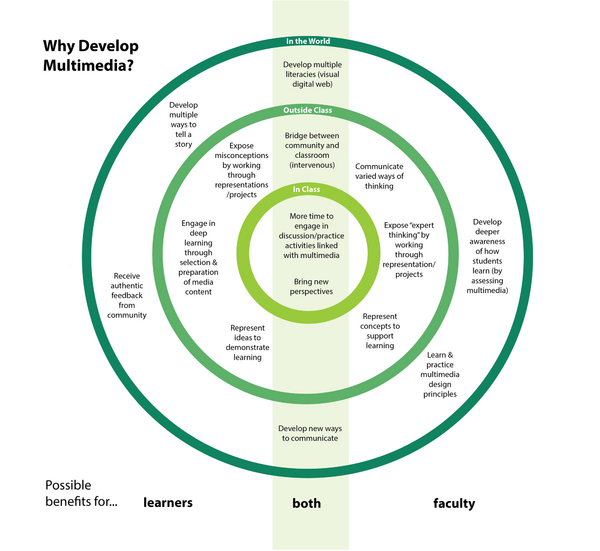Documentation:Video Basics/Uses and Benefits
Appearance
Why Do This?
"Visual culture is not limited to the study of images or media, but extends to everyday practices of seeing and showing, especially those that we take to be immediate and unmediated" (Mitchell, 2002, Showing seeing: A critique of visual culture. Journal of Visual Culture, p. 170).
There are many ways to create video to support learning - from creative stop-motion animations like this to demonstrate a concept to live demonstration or interview. Basic uses for video in learning include:
- Documenting an experience or event
- Explaining something
- Demonstrating something
- Telling a story
To see a sample of our own student/staff/faculty created video at UBC, have a look at UBC's YouTube Channel
Benefits of Video for Learning
- "for a novice learner, I have found that concise expository summaries do very little to improve learning - a key for me is to start with misconceptions and show how misconceptions can morph into a complete scientific truth."
- Derek Muller of Veritasium in an interview with nottingham science on YouTube.
- "students can develop a deep understanding of a science concept by bringing together different ways of making meaning,: researching content, storyboarding, making models, using narration, labelling key aspects, etc."
- Gary Hoban, Associate Professor, University of Wollongong, Australia who developed Slowmation
